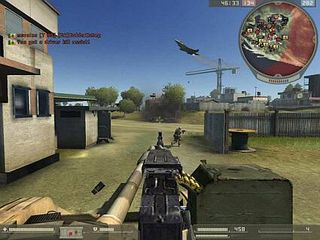The Ultimate Mouse Hunt
Of Mice And Men
Finally, each individual has his or her own feel and may or may not be comfortable with various mouse speeds. Some of our test subjects can't play games at all with a mouse that moves too fast, while others are immediately at ease, and others - like this writer - gradually get used to it.
So only actual use will let you judge a mouse's real performance. And as usual, use depends on needs.
The sensors on all true second-generation mice (2,000 images/s and 800 dpi) are amply sufficient for the majority of day-to-day applications. Provided the build quality of the mouse is sufficient, speed and reactivity will be plenty enough for office applications, Web browsing or video editing. Going beyond that only makes sense for two types of applications: games and graphics. For gaming, mouse preciseness is most important for FPS (First-Person Shooter) games, but also to a lesser degree for Real-Time Strategy (RTS) games, because you need to be rapid and precise in selecting units. For graphics, photo retouching, CAD and 3D creation; the mouse also plays an essential role. Generally, vendors' high-performance mice marketing campaigns are targeted for FPS players, while the devices are just as suitable for graphics work. One corollary to keep in mind, however, is that once you've gotten used to a high-performance mouse, it's hard to go back to another mouse for just about any application.
How We Test

For gaming and graphics, what's needed is an evaluation of the mouse's actual performance in use. The best approach is to start with the preciseness of the mouse before taking resolution and reactivity into account. For that, we set all the mice at the same speed. Then, we try to click as quickly as possible on a precise spot and take a few sniper shots in an FPS game. Overall, we can say there were no huge surprises. First, laser performed better than LED. Then, more sophisticated sensors and optics were a plus. On the other hand, the impact of the number of images per second is hard to gauge.
Then, we bring resolution into play. The minimum we tested in this selection was 1,000 dpi, so we set the various mice we tested as close as possible to that value. Then, we made our motion and FPS aiming tests at a resolution of 1280x1024. Finally, we pushed the ones that were able to keep up to 1,600 dpi at 1600x1200 to see if the mouse was still workable.
Stay on the Cutting Edge
Join the experts who read Tom's Hardware for the inside track on enthusiast PC tech news — and have for over 25 years. We'll send breaking news and in-depth reviews of CPUs, GPUs, AI, maker hardware and more straight to your inbox.
-
Ephebus Stay away from this mouse. I've had two, and both started double clicking with the left button after about a year. Logitech's forums are full of topics on this issue. The latest versions of the G7 also showed a regrettable decrease in manufacturing quality - my first mouse had a rubber coating around it (release A0), while on my second G7 (release A2) it was replaced by cheap plastic. Issues with the receptor dongle losing connection with the mouse are also frequent, and Logitech will go to great lengths to avoid honoring their 3-year warranty.Reply
Most Popular

